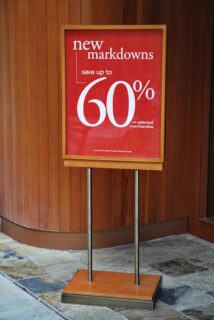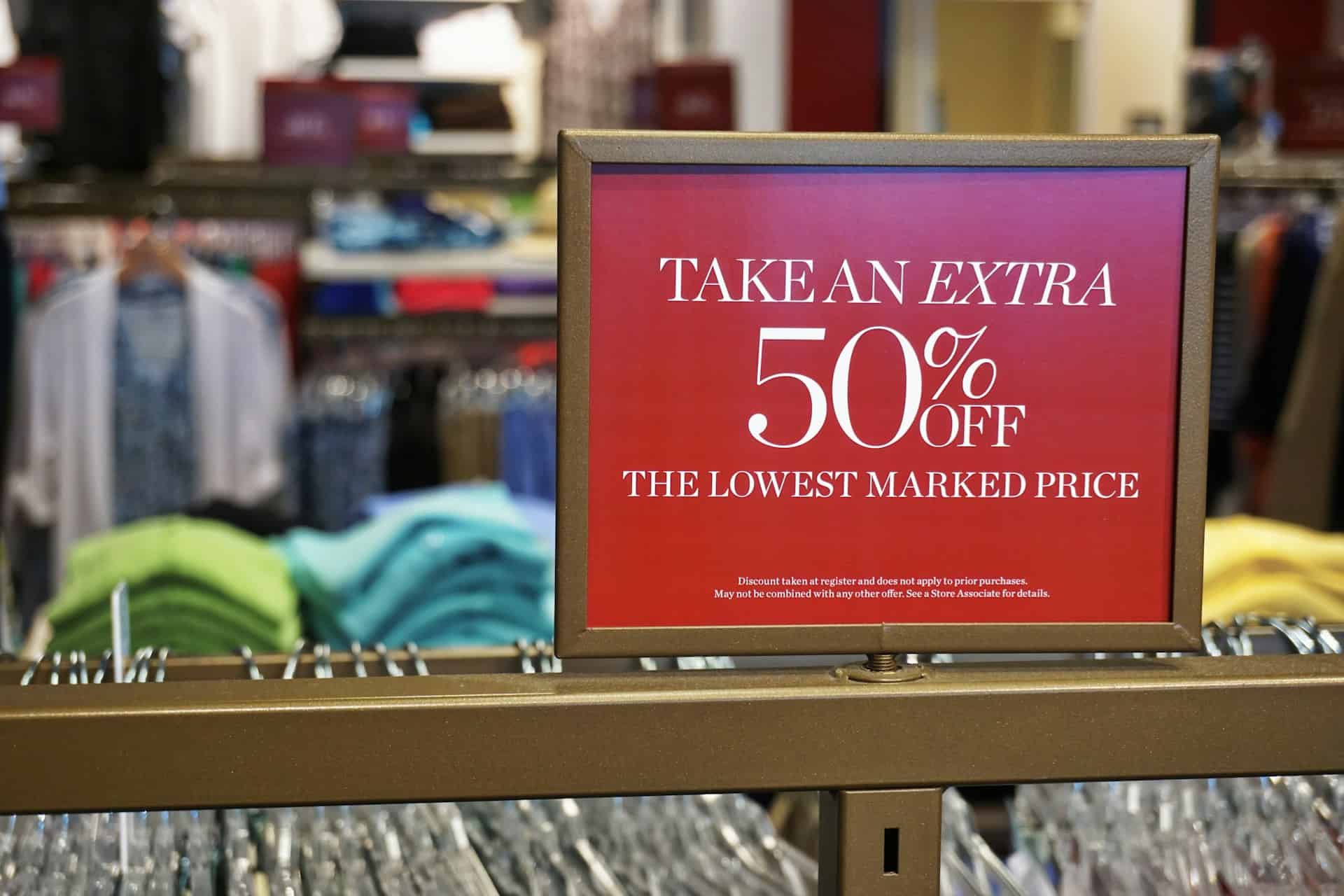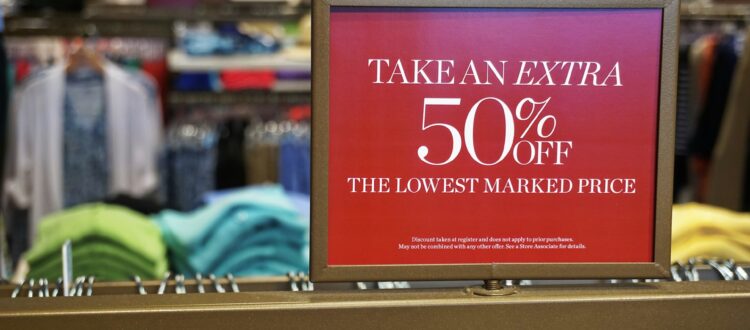Polystyrene signs are a popular choice for businesses, event planners, and advertising agencies. The flat, relatively thin material allows for easy customization, including the ability to cut the sign into various shapes and sizes.
They are weather-resistant, making them suitable for both indoor and outdoor applications. They can be used for everything from trade shows and exhibitions to storefront displays and real estate signage. With their eye-catching appearance and flexibility, they provide an effective way to attract attention and convey messages in a cost-effective manner.
What are Polystyrene Signs Made of?
Polystyrene signs are typically made from plastic which is simply designated as polystyrene. It is a lightweight, flexible, and solid plastic material that is derived from petroleum. It is created by expanding small polystyrene beads using heat and steam, which causes them to fuse together and form a solid, uniform structure. The result is a sheet material that is lightweight and durable.
The density and available thicknesses of polystyrene can be purchased to meet specific design requirements. Moreover, they can be coated with various finishes and paints to enhance their appearance and protect them from UV rays and weather conditions. The use of polystyrene signs offers a cost-effective solution that is easy to customize, transport, and install.
How Does Polystyrene Sign Printing Works?
Polystyrene sign printing typically involves a process called direct-to-substrate (DTS) printing. This process utilizes advanced digital printing technology to directly print images and text onto the polystyrene surface. First, the design for the sign is created using graphic design software. The artwork can consist of vibrant colors, logos, images, and any desired text. The design is then digitally printed DTS onto the styrene or a decal. This vinyl is carefully applied to the polystyrene board, bonding with its surface.
The vinyl serves as a protective layer, ensuring that the printed design remains vibrant and durable over time. UV-resistant inks are commonly used in the printing process to prevent fading caused by exposure to sunlight. This direct printing method allows for crisp, high-resolution images and clear text that withstands the rigors of outdoor use. The versatility of polystyrene foam also allows for additional customization options, such as cutting the sign into specific shapes or adding dimensional elements.
Benefits of Polystyrene Signs
1. Affordability: They are a cost-effective option for businesses and events, offering an affordable solution for signage needs.
2. Lightweight: The use of polystyrene makes these signs lightweight, making them easy to transport, install, and reposition as needed.
 3. Durability: Despite their lightweight nature, polystyrene signs are durable and weather-resistant. They can withstand outdoor conditions such as rain, wind, and sunlight without deteriorating quickly.
3. Durability: Despite their lightweight nature, polystyrene signs are durable and weather-resistant. They can withstand outdoor conditions such as rain, wind, and sunlight without deteriorating quickly.
4. Customizability: They can be easily customized to meet specific design requirements. They can be cut into various shapes and sizes, allowing for creative and unique signage displays.
5. Eye-catching: With their ability to be digitally printed and their vibrant colors, polystyrene signs are visually appealing and can easily attract attention.
6. Versatility: They can be used for both indoor and outdoor applications, making them suitable for various settings such as trade shows, storefronts, events, and more.
7. UV and Moisture Resistance: The finishes applied to them make them resistant to UV rays and moisture, ensuring that the signs stay intact and vibrant even in direct sunlight and rainy conditions.
8. Longevity: They have a relatively long lifespan, allowing businesses to use them for extended periods without needing frequent replacements.
9. Ease of installation: The lightweight nature of these signs makes them easy to handle, hang, or mount on different surfaces, making the installation process quick and convenient.
10. Environmental friendliness: Polystyrene is recyclable, meaning that these signs can be recycled at the end of their useful life, reducing their environmental impact.
Common Uses of Polystyrene Signs
1. Indoor signage: They are commonly used for indoor signage, including displays at trade shows and exhibitions. They can be easily transported and provide a clear and rigid surface for showcasing information or advertising materials.
 2. Point-of-purchase (POP) displays: Polystyrene, particularly extruded polystyrene, is often used in point-of-purchase displays. It is a lightweight material that can be easily molded into various shapes and sizes, making it ideal for creating eye-catching and attractive displays.
2. Point-of-purchase (POP) displays: Polystyrene, particularly extruded polystyrene, is often used in point-of-purchase displays. It is a lightweight material that can be easily molded into various shapes and sizes, making it ideal for creating eye-catching and attractive displays.
3. Wayfinding and directional signs: They are also suitable for indoor wayfinding and directional signage. They can be easily customized with text and graphics, making them effective for guiding people within buildings or complex environments.
4. Restaurant signs: They can be used for restaurant signage, both indoors and outdoors. They are waterproof and durable, allowing them to withstand various weather conditions and maintain their appearance over time.
What Thicknesses are Polystyrene Signs Available?
They are available in a range of thicknesses to meet different application requirements. The thickness options can vary depending on the manufacturer and the specific type of polystyrene foam being used. Common thickness options for polystyrene signs can range from as thin as 1/16 inch (1.5mm) to as thick as 2 inches (50.8mm) or more. Thinner options are often used for smaller indoor signs or displays, while thicker options are suitable for larger outdoor signs or those requiring extra rigidity and durability.
The choice of thickness depends on factors such as the intended use of the sign, visibility requirements, and the level of structural support needed. It’s always recommended to consult with the manufacturer or supplier to determine the most suitable thickness for your specific application.
Can You Cut Any Shape for Polystyrene Signs?
Yes, they can be cut into various shapes to meet specific design needs. They can also be cut using saws, knives, or CNC routing machines, depending on the desired shape and level of precision. The ability to cut polystyrene into different shapes makes it an excellent choice for custom signage, allowing businesses and individuals to create unique and eye-catching displays that align with their brand and messaging.
Can You Print 2-sided on Polystyrene Signs?
 Yes, it is possible to print on both sides of polystyrene signs. They provide a smooth and rigid surface that can be easily printed on using various printing techniques such as screen printing, digital printing, or vinyl application. This allows for the application of graphics, text, and artwork on both sides of the sign, maximizing visibility and communication opportunities.
Yes, it is possible to print on both sides of polystyrene signs. They provide a smooth and rigid surface that can be easily printed on using various printing techniques such as screen printing, digital printing, or vinyl application. This allows for the application of graphics, text, and artwork on both sides of the sign, maximizing visibility and communication opportunities.
Printing on both sides of the sign can be particularly beneficial for applications like hanging signs, storefront displays, or directional signage, where visibility from multiple angles is important. It’s important to work with a professional printing service or sign manufacturer who can ensure proper alignment and adhesion of the print on both sides of the polystyrene sign, resulting in a high-quality and durable finished product.
Can You Use Polystyrene Signs Indoor and Outdoor?
Yes, they be used both indoors and outdoors. Polystyrene is known for its durability and weather-resistant properties, making it suitable for various environmental conditions. When used indoors, polystyrene signs can serve as promotional displays, directional signage, or decorative elements. They can withstand normal indoor conditions, including temperature fluctuations and humidity levels.
When used outdoors, polystyrene signs are designed to withstand harsher elements such as sunlight, rain, and wind. It’s recommended to choose polystyrene signs specifically formulated for UV resistance for outdoor use and to properly install them to ensure their stability and longevity.
Will Polystyrene Signs Scratch or Fade?
 They are generally resistant to scratching, thanks to their durable and smooth surface. However, it’s important to note that excessive or sharp friction can cause scratches or damage to the sign. To minimize the risk of scratching, it is recommended to handle and clean polystyrene signs with care, using soft cloths or sponges instead of abrasive materials.
They are generally resistant to scratching, thanks to their durable and smooth surface. However, it’s important to note that excessive or sharp friction can cause scratches or damage to the sign. To minimize the risk of scratching, it is recommended to handle and clean polystyrene signs with care, using soft cloths or sponges instead of abrasive materials.
Also, prolonged exposure to sunlight can cause polystyrene signs to fade over time. UV radiation can lead to color fading or slight discoloration. To prevent fading, it is advisable to use UV-resistant inks or coatings when printing or applying graphics to polystyrene signs. In outdoor settings, regularly cleaning and maintaining the signs can also help preserve their appearance and reduce the risk of fading.
How Long Will Polystyrene Signs Last?
Their lifespan can vary depending on various factors such as the quality of the material used, the specific environmental conditions they are exposed to, and their maintenance. Overall, polystyrene signs are known for their durability and longevity. When used indoors, they can last for several years or even longer, especially when properly cared for and maintained. When used outdoors, the lifespan may be reduced due to exposure to elements such as sunlight, rain, temperature fluctuations, and wind.
However, with proper installation, regular cleaning, and the use of protective coatings or laminates, polystyrene signs can still maintain their appearance and functionality for a significant amount of time. It is important to consult with professionals and manufacturers to ensure that they are made using high-quality materials and proper techniques to enhance their lifespan.
Conclusion
Polystyrene signs are a versatile and durable signage option that can be used for both indoor and outdoor applications. They can be printed on both sides, providing maximum visibility and communication opportunities. The smooth and rigid surface of polystyrene signs makes them resistant to scratching, although care should still be taken during handling and cleaning. With proper installation, maintenance, and use of high-quality materials, they can last for several years or even longer, making them a reliable choice for various signage needs.
Popular Posts:




